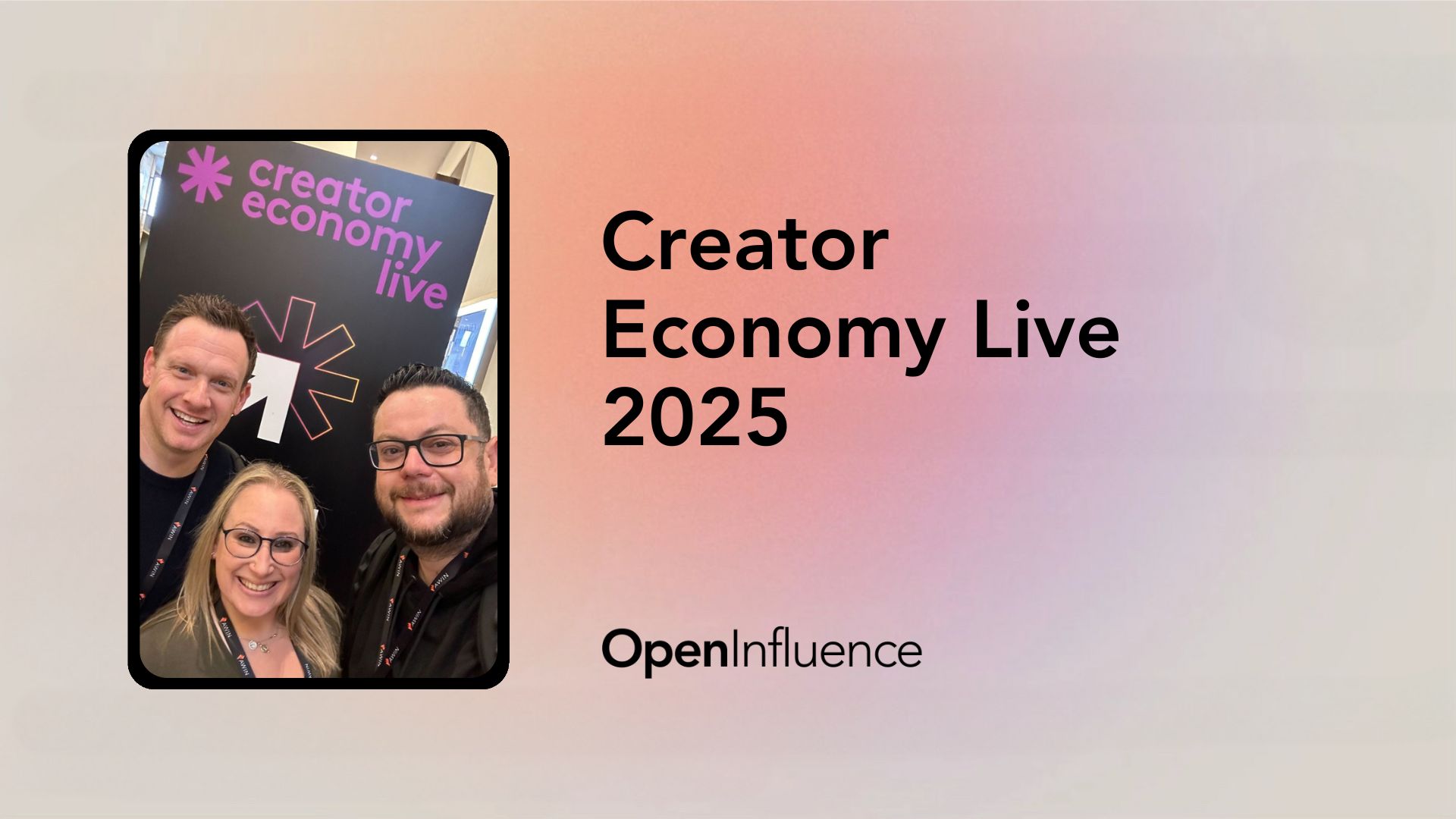The Future of Creator Marketing: Key Takeaways from Creator Economy Live 2025
The creator economy is no longer just an emerging industry—it’s a dominant force shaping modern marketing strategies. At Creator Economy Live 2025, industry leaders gathered in Las Vegas to explore the evolving role of creators, the integration of AI, and the ever-growing impact of influencer marketing on brand success.
For brands and agencies, the stakes have never been higher. How do you measure real impact? How do you foster authentic, long-term relationships with creators? How do you cut through the noise on crowded social platforms? These are just some of the challenges the industry is working to solve.
At Open Influence, we were there to gain insights, share our expertise, and connect with the best in the business. Here’s what we learned.
The Five Key Themes Defining Creator Marketing in 2025
1. Rethinking Measurement & ROI: It’s Time to Go Beyond Vanity Metrics
Marketers have outgrown likes and follower counts as primary success indicators. The focus has shifted to data-driven decision-making—tracking engagement quality, conversion rates, and overall business impact. Brands are investing in tools that optimize influencer marketing based on real performance insights, not just surface-level engagement.
2. Building Long-Term Creator Relationships, Not Just One-Off Deals
The era of transactional influencer marketing is fading. Brands are realizing that long-term creator collaborations lead to deeper brand affinity, stronger storytelling, and ultimately, better results. Instead of treating creators as media placements, brands are beginning to integrate them as authentic extensions of their identity.
As Open Influence VP of Partnerships Jessica Tobey put it:
“Hearing from those leading influencer marketing efforts for major brands reinforced many of the insights I’ve been seeing with my own clients—platform diversification, experimenting with different creators, and staying agile with trends were consistent themes throughout.”
3. Social Commerce is Changing How Consumers Buy
Creators aren’t just driving brand awareness—they’re driving purchases. The rise of TikTok Shops, Instagram Checkout, and YouTube’s e-commerce integrations has turned social platforms into powerful retail channels. Smart brands are adapting their influencer strategies to shorten the path from discovery to conversion.
4. A Smarter Content Strategy: Making Creator Content Work Harder
Influencer marketing isn’t just about organic social posts anymore—it’s about maximizing the value of creator content across multiple touchpoints. Leading brands are repurposing influencer content for:
- Paid social campaigns
- E-commerce product pages
- Brand-owned channels like email and websites
- Retail media networks and in-store activations
The key is choosing the right mix of influencer-generated content (IGC), user-generated content (UGC), and professional creator partnerships to increase efficiency and impact.
5. AI is a Tool, Not a Replacement for Human Creativity
AI is accelerating campaign execution, improving audience targeting, and refining how brands find the right creators. But while AI enhances efficiency, the most effective campaigns still require human oversight, strategic thinking, and authentic storytelling.
As brands integrate AI into their creator marketing efforts, the challenge is striking the right balance—leveraging automation without losing the human touch that makes influencer marketing so powerful.
Standout Panels: Insights from Industry Leaders
Two of the most compelling panels at Creator Economy Live reinforced these themes.
Finding the Right Creator: The Art & Science of Influencer Selection
This panel brought together executives from Nutrabolt, Kimberly-Clark, Logitech, and Sesame Workshop to discuss how brands are refining their approach to creator selection.
A key insight? Finding the right creator isn’t just about audience size—it’s about alignment. Successful brands are prioritizing creators who:
– Understand the brand’s mission and product
– Can integrate organically into the brand’s marketing ecosystem
– Have audiences that engage in meaningful, action-driven ways
As Eddie Simon, VP of Sales and Partnerships at Open Influence, explained:
“Finding the right creator is challenging enough, but what truly sets a creator apart is their genuine understanding of the brand, their enthusiasm for the product, and their ability to align with key performance indicators.”
Balancing Creativity with Data-Driven Performance
Another insightful panel featured thought leaders from Fabletics, Fox Entertainment, Google, Acorns, and MagicLinks discussing how brands are balancing creative freedom with data-driven decision-making.
Google, for instance, showcased how AI-powered insights help brands identify the right creators based on audience search behavior, interests, and demographic trends. But even with these advancements, the panelists agreed: technology enhances decision-making, but creativity drives impact.
“Technology matters in finding the right creator,” Simon noted. “If you do the homework ahead of time, the content should do the work.”
Brands that succeed in creator-led marketing are those that:
- Use audience insights to shape creator selection and content themes
- Test content in real time and optimize based on performance
- Give creators creative freedom while maintaining brand alignment
The most engaging creator content happens when brands set clear objectives but allow room for flexibility and originality.
Key Takeaways for Marketers in 2025
Creator marketing is no longer a side tactic—it’s a critical pillar of brand strategy. As the space continues to evolve, three key takeaways emerged from Creator Economy Live:
- Creator marketing is now a primary channel for driving business results. Brands that integrate creators into their full-funnel marketing strategies are seeing the highest ROI.
- AI is a powerful tool, but it still requires human oversight. While AI-driven insights can help brands refine their influencer selection and optimize performance, human creativity and strategic thinking remain essential.
- Brands and agencies must stay agile. The social media landscape shifts rapidly—marketers who are willing to experiment, iterate, and embrace platform diversification will maintain a competitive edge.
As Tobey emphasized, content amplification should go beyond paid media and extend across multiple marketing channels. And most importantly, staying flexible and nimble is crucial in adapting quickly to emerging trends and opportunities.
Final Thoughts: What’s Next for Creator Marketing?
The future of creator marketing isn’t about choosing between in-house teams or agencies—it’s about co-creation, collaboration, and building strategic partnerships that drive results.
Brands that embrace long-term creator relationships, integrated content strategies, and data-driven decision-making will lead the way. The key to success is breaking down internal silos and working across teams—PR, media, content, and brand—to build cohesive, creator-powered marketing strategies.
At Open Influence, we’re helping brands navigate this evolving space—developing creator-led strategies that are scalable, data-driven, and built for impact. Whether you’re looking to launch long-term creator partnerships, optimize social commerce strategies, or maximize influencer-generated content, we’re here to help.
Open Influence is a leading global creator marketing agency dedicated to creating engaging campaigns.

